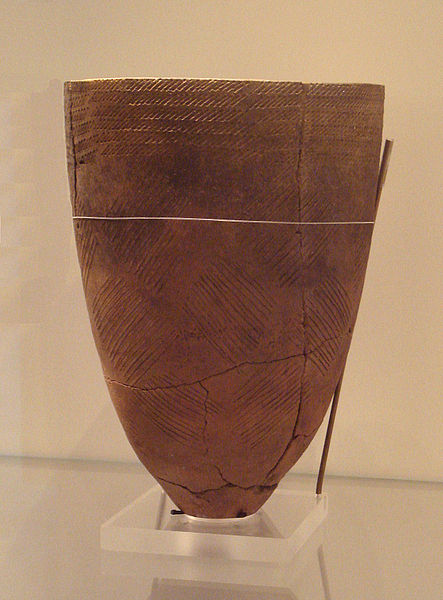The Lower Paleolithic era on the Korean Peninsula and in Manchuria began roughly half a million years ago. The earliest known Korean pottery dates to around 8000 BC, and the Neolithic period began after 6000 BC, followed by the Bronze Age by 2000 BC, and the Iron Age around 700 BC. Similarly, according to The History of Korea, the Paleolithic people are not the direct ancestors of the present Korean people, but their direct ancestors are estimated to be the Neolithic People of about 2000 BC.
Korean earthenware jar with comb pattern; made 4000 BC, Amsa-dong, Seoul, now in British Museum
Korean Bronze Age sword. Seoul, National Museum of Korea
Gold buckle of the Proto–Three Kingdoms period
Painting of envoys from the Three Kingdoms of Korea to the Tang court: Silla, Baekje, and Goguryeo. Portraits of Periodical Offering, 7th century Tang dynasty
Samguk yusa or Memorabilia of the Three Kingdoms is a collection of legends, folktales and historical accounts relating to the Three Kingdoms of Korea, as well as to other periods and states before, during and after the Three Kingdoms period. "Samguk yusa is a historical record compiled by the Buddhist monk Il-yeon in 1281 in the late Goryeo Dynasty." It is the earliest extant record of the Dangun legend, which records the founding of Gojoseon as the first Korean nation. The Samguk yusa is National Treasure No. 306.
Samguk yusa
Gojoseon Tangun-Wanggeom Statue
Photo of Samguk Yusa Kyujanggak Collection







